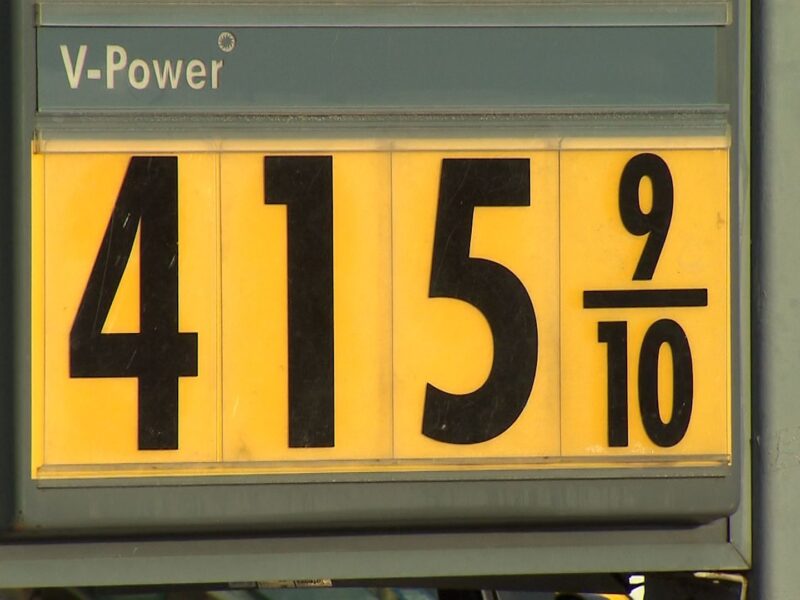The closure of a crucial trade route in the past would have led to a significant increase in household energy and fuel costs. However, despite the ongoing crisis in the Red Sea, with oil and LNG tankers taking longer routes, energy prices have remained relatively stable or even decreased in recent weeks.
Europe heavily relies on natural gas imports, but the benchmark gas contract has actually fallen by 28% since early December when the conflict escalated due to attacks by Iran-backed Houthi militants. Despite further tensions, including strikes between Iran and Pakistan and attacks by Iran’s allies in the Middle East, the prices of Brent crude and West Texas Intermediate, the global and US oil benchmarks, have seen only modest increases, around 4% since early December. American motorists haven’t experienced significant changes at the gas pump either, with the average price for a gallon of regular gas remaining steady at $3, the same as a month ago and 8% lower than the previous year.
Analysts attribute this stability to economic factors, such as weaker demand in countries like China and Germany, coupled with ample oil and gas supplies. However, it’s important to note that these conditions may change in the future.
There is a significant surplus of oil.
As per Kpler data, approximately 10% to 12% of global crude oil exports and around 14% to 15% of exports of oil products, including gasoline and diesel, typically pass through the Red Sea. In recent weeks, many of these tankers have been compelled to take longer routes to bypass the Red Sea due to the ongoing crisis. However, they are still successfully delivering their shipments to their intended destinations, as stated by Falakshahi.
He mentioned, “It’s primarily a challenge in the supply chain, and we haven’t experienced a loss of oil volumes.” Some tankers have had to detour around the Cape of Good Hope in South Africa, but overall, the volume of oil remains consistent.
Despite the robust supply, there is a decline in global demand for oil. China’s National Bureau of Statistics recently confirmed that the country’s economy grew by 5.2% last year, which exceeded government projections but still represents one of China’s weakest economic performances in more than three decades.

In November 2023, a vehicle is seen refueling at a gas station in Washington, DC.
The International Energy Agency (IEA) has reported that global oil demand growth is anticipated to nearly cut in half this year. Concurrently, the global oil supply is predicted to reach a historic high, driven by substantial production levels in countries like the United States and Canada.
Despite significant output reductions implemented by the Organization of the Petroleum Exporting Countries (OPEC) and some of its allies, including Russia, last year to support oil prices, the surge in production from other nations could lead to a significant oil surplus on a global scale if the OPEC+ alliance proceeds with its plan to reverse some of those cuts during the second quarter.
Homayoun Falakshahi, an analyst, believes that the disruptions in the Red Sea are likely to persist for “months.” He expects the price of Brent crude to surpass $80 per barrel in the near future as market sentiments align with this perspective. Furthermore, he suggests that the price could potentially rise to as high as $85 per barrel in the coming weeks, and any further escalation of the conflict in the region, particularly if Iran becomes more directly involved, could result in even higher prices, though such a scenario is seen as unlikely.
There is a strong and reliable supply of gas in Europe.
Europe’s efforts to reduce its reliance on Russian gas since early 2022, achieved through diversifying its gas sources, expanding LNG infrastructure, and filling up storage facilities, are yielding positive results.
Xi Nan, a senior gas researcher at Rystad Energy, emphasized that the current high levels of stored gas are a crucial factor in keeping gas prices stable in Europe. Gas Infrastructure Europe reported that the European Union’s gas storage facilities were 78% full, which is well above the average of 63% recorded on the same day between 2017 and 2021.
Recent analysis by Kpler has shown that several ships carrying Qatari LNG bound for Europe have opted to circumvent the Red Sea by taking a longer route around the southern tip of Africa. However, Nan explained that this route extension only adds around 10 days to the journey. She emphasized that the gas market is currently not at risk of supply shortages, as all other natural gas sources, including those from the United States, are robust.
In 2023, Qatar supplied slightly over 5% of Europe’s gas demand, considering the United Kingdom as well, based on data from Wood Mackenzie.
Nan also pointed out that relatively modest gas demand, combined with a shift towards renewable energy sources in Europe’s power market and reduced industrial consumption since the Ukraine conflict began, are helping to prevent significant spikes in gas prices.











